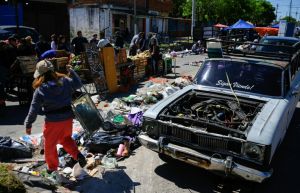Searchers found more bodies Tuesday as they slogged through muck and rain, but the number of victims in addition to the 14 already found has not been confirmed, Snohomish County Sheriff's Office spokeswoman Shari Ireton said, according to Reuters.
John Pennington, director of the county Emergency Department, said local authorities were vigilant about warning the public of landslide dangers, and homeowners "were very aware of the slide potential," Reuters reported.
In fact, the area has long been known as the "Hazel Landslide" because of landslides over the past half-century, according to Reuters. The last major one before Saturday's disaster was in 2006.
Patricia Graesser, a spokeswoman for the Army Corps of Engineers in Seattle, said it appears that the report was intended not as a risk assessment, but as a feasibility study for ecosystem restoration, Reuters reported.
No landslide warnings for the area were issued immediately before the disaster, which came after weeks of heavy rain, according to Reuters. The rushing wall of quicksand-like mud, trees and other debris flattened about two dozen homes and critically injured several people.
Meanwhile, searchers continued to pick through the debris, warning they were likely to find more bodies, Reuters reported. Authorities were working off a list of 176 people unaccounted for, though some names were believed to be duplicates.
The threat of flash floods or another landslide loomed over the rescuers as a volunteer was injured Tuesday when he was struck by debris blown by a helicopter's rotor, according to Reuters. The man was transported to a hospital for evaluation, but the injuries appear minor, Snohomish County Sheriff's spokeswoman Shari Ireton said in a statement.
Predicting landslides is difficult, according to a study published by the U.S. Geological Survey in 2012, Reuters reported. One challenge is estimating the probability of a slide in any particular place.
© 2025 HNGN, All rights reserved. Do not reproduce without permission.








